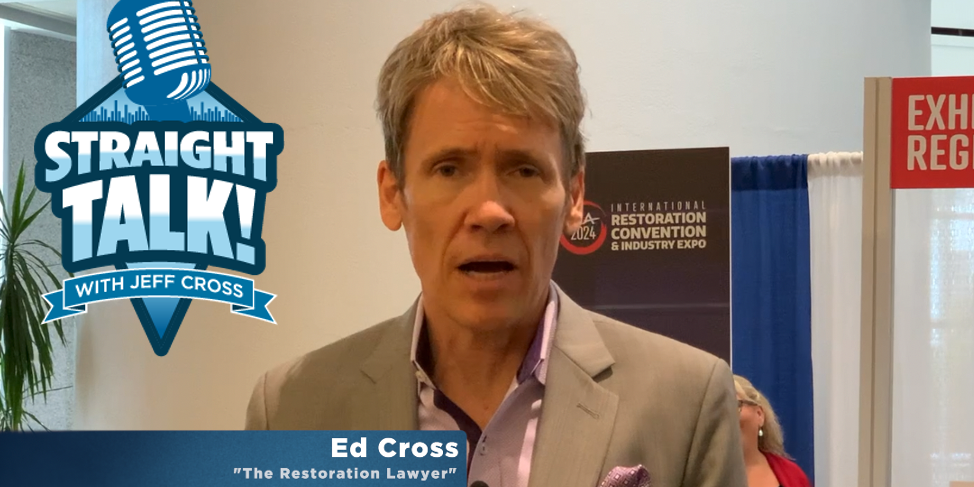Doing business with adjusters

Want to do business with adjusters? Why wouldn’t you? They spend about $200 billion annually on insured losses. It’s a recession-proof source of business that isn’t hindered by cold weather or a flat economy. If you want to increase market share of insurance claims work, you need to start with an understanding of how to market your services to adjusters.
Who are the insurance industry representatives who handle claims involving damaged property? Where do you find them and how do you contact them? How can you develop a working relationship with an adjuster?
This article presents details you can use to find adjusters and market your services without using negative sales pressure.
Where to find adjusters
An excellent place to start your search for adjusters is in the local Yellow Pages. Insurance claims contacts will be listed under “Insurance Agencies,” “Insurance Companies” and “Adjusters.”
Professional claims associations are another good source of contacts. Their meetings provide an excellent opportunity to network with adjusters. Some associations allow restoration contractors to become associate members.
Most claims associations have their own website. Simply use a search engine such as Google or Yahoo! and use keywords such as “claims associations” and a list of various association websites will be listed. Then you could search the sites for meeting information, membership, etc.
Understand the ”hierarchy”
You should understand the “hierarchy” of a claims department in order to further identify the adjuster who is most likely to call you for a restoration job. You will also have to routinely “qualify” adjusters, which means establishing whether or not they have the authority to decide which contractor to call in on a job.
Find out who at each office is on the “front line.” That is, find out who would be the first person to take the initial report from the policyholder. Getting to know that person is the first step toward getting one”s “foot in the door.”
The hierarchy at the insurance company usually follows this order, starting with the person who has the least authority:
- Claims clerk
- Telephone adjuster (sometimes called a telephone claims representative or TCR)
- Field adjuster
- Senior adjuster (sometimes called a general adjuster)
- Claims supervisor (sometimes called the claims examiner or analyst)
- Claims unit manager (who oversees a small crew of supervisors)
- Claims manager.
Depending on the company, you may find many variations of this hierarchy. A small branch office may only have one claims clerk and one claims manager. Another company may have the same two positions, but may refer to the claims clerk as claims secretary and the claims manager as resident adjuster.
Some insurance companies use independent adjusters, and you should know how they work and operate.
What they do with claims
When claims are called in, they are received first by the lower-level claims people. If there is an emergency situation requiring water mitigation or board up, it is frequently the lower level claims rep who will make that call.
After establishing a relationship with this claims rep, it may be a natural step to move up the hierarchy and develop relationships with the next higher level of claims personnel. Some insurance companies do not use field adjusters for all claims, but handle minor claims by telephone.
The telephone adjuster contacts the policyholder, conducts the necessary investigation and arranges for a damage assessment by telephone. Telephone adjusters usually require a contractor”s estimate. You will find it advantageous to develop a relationship with the telephone adjusters, becoming their “eyes and ears.”
The field adjuster is assigned cases that require actual inspection for assessment of damages. Field adjusters are usually trained to prepare their own estimates. The generally accepted practice is for the adjuster and contractor to walk the loss together, agree to the scope of damage, and then each price their own estimate.
Afterwards, they come together to work out differences and arrive at a final, agreed-upon price. Claims supervisors and/or claims examiners oversee the paperwork turned in by the field adjusters. The field adjuster performs the job in the field and the supervisor or examiner processes the paperwork. Claims examiners have usually spent two to five years handling claims as field adjusters. Thereafter, they supervise or “examine” the work done by field adjusters.
Occasionally, you”ll find a claims examiner who has never worked in the field, and one may wonder how this person can supervise a field adjuster and provide the necessary technical direction. Nevertheless, some insurance companies believe that an examiner does not have to be able to execute a competent adjustment, but to simply critique and approve it. For the most part, claims examiners are proficient and experienced adjusters.
Rarely does a claims examiner suggest a contractor. By the time this person reviews a claim, contractors may have already been called. This is also true of claims managers. In fact, most unit managers (who supervise claims examiners) and claims managers (who manage all claims personnel) rarely handle claims.
Making the approach
Now that you understand the hierarchy and the various positions involved, it’s time to discuss how to approach insurance claims adjusters.
Obviously, your goal is to offer your services — but one problem that faces the restoration industry is when contractors promise services they cannot deliver. That”s a sure way to destroy good insurance claims contacts. You should be ready and willing to provide a competent service at a fair price.
You must also realize that the adjuster must be perceived to be making unbiased choices from a list of several contractors. Distributing promotional items is a good way to remain in “top-of-mind” status with claims personnel, rather than coming in just to ask for work. For example, a contractor might distribute a quarterly calendar or message pad imprinted with his advertisement.
Periodically, he may stop in to say hello and distribute these or some other useful items that office personnel need periodically. The object is to gently remind claims personnel that the contractor is out there and can help them if the need arises. Make every effort to understand the particular needs of the individual adjuster, recognizing that those needs vary from company to company.
The successful contractor gradually establishes himself as one who provides the services to fill those individual needs.
Have a website
I can’t believe that anyone who is serious about business today could operate without a website. You must have a website even if it only serves the purpose of a business card that lists your name, contact information and services offered.
In my mind, it’s no different than if you tried to operate a business without a telephone or a listing in a telephone directory. That’s how prevalent and expected a website is for conducting business.
In the past, it was somewhat expensive to create a website. Many years ago, I paid a retired MindSpring executive (he was 28 and a millionaire) to create my website, and it cost about $5,000.
But recently, I started a comparable website for a music venture with my son and it cost us approximately $35 to create and about the same amount each month to maintain. There’s just no excuse for a business to forego having its own website.
It’s expected by your market and will certainly help you with marketing to the insurance claims industry. You won’t see bulky telephone books in an adjuster”s office — just a computer. That’s how the adjuster gets all his data and resources.
Participate in claims associations
As was previously explained, an important place to meet insurance claims adjusters is through professional associations. Each area of the country has one or two claims associations. Contractors interested in insurance restoration work should attempt to become involved in at least one.
Be aware that not all adjuster’s organizations allow restoration contractors to join, but some do and those that do not may still welcome a contractor to attend certain functions and to advertise in their publications.
Advertise in publications and directories
Most claims associations have a monthly newsletter or directory. Find out if they sell advertising space, and then consider the cost effectiveness of such advertising. An adjuster will often consult his local claims association publication when looking for a restoration firm or expert of some type.
Use direct mail
Many restoration contractors have successfully penetrated their market with an introductory mail campaign. Begin by obtaining or compiling an adequate mailing list of the claims people in the area. When designing the material for a mailing, remember that it is absolutely vital to grab the adjuster”s attention.
It is not enough for a restoration professional to send a letter stating what he can do. Include a promotional “giveaway” — an item that would be useful to an adjuster, such as a roofer”s pitch card. (See “Use promotional ”giveaways”” sidebar above). Getting something that is clearly useful will greatly improve the chances that the adjuster will read the accompanying letter and retain the contractor”s business card for future work.
You can do this
It takes a little time and effort, but it can be done. You can break into the rewarding field of restoration contracting for insurance adjusters.
Following these suggestions, studying the available books and attending workshops on marketing to adjusters will give you an advantage you won’t regret.
Peter J. Crosa has been a licensed independent adjuster and private investigator for more than 35 years, handling large complex losses throughout the United States and Latin America. Since 2000, he has traveled across the country conducting seminars and speeches on the topic of marketing services to the insurance claims industry. He is the author of the “2009 Restoration Contractor”s Guide to Insurance Repair” and produces books and workshops on marketing restoration services to insurance adjusters. Visit his website at www.sshca.net or e-mail him at [email protected].












